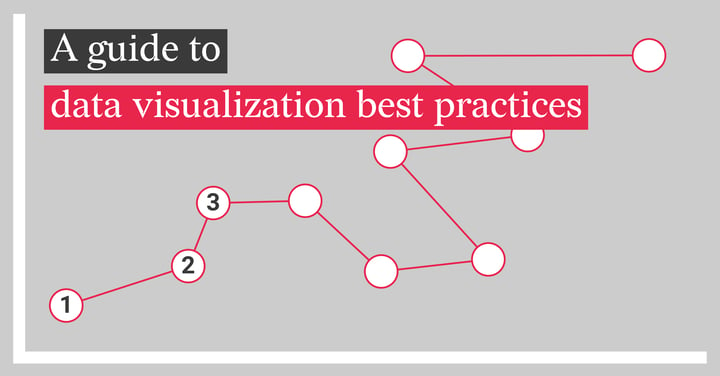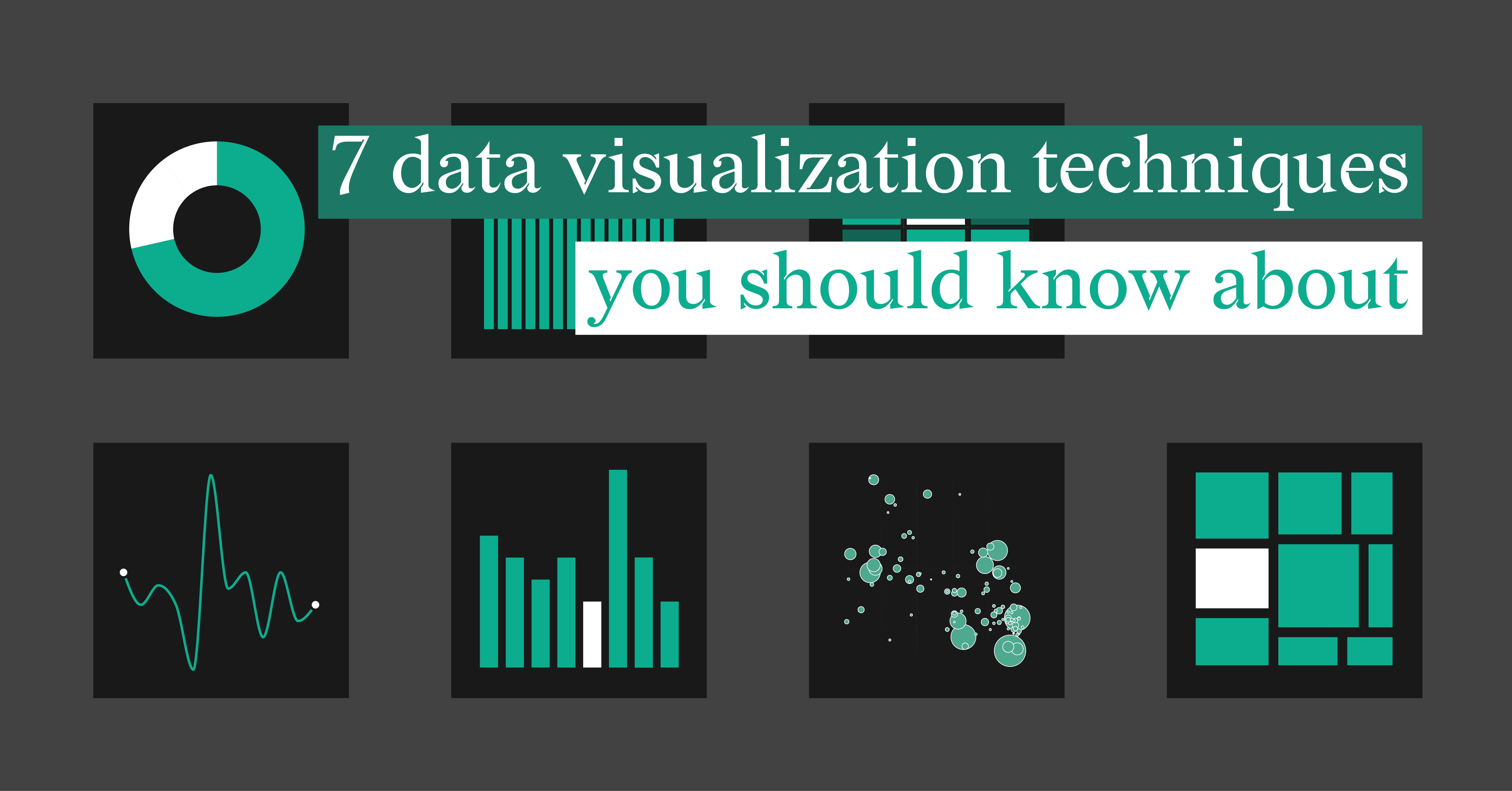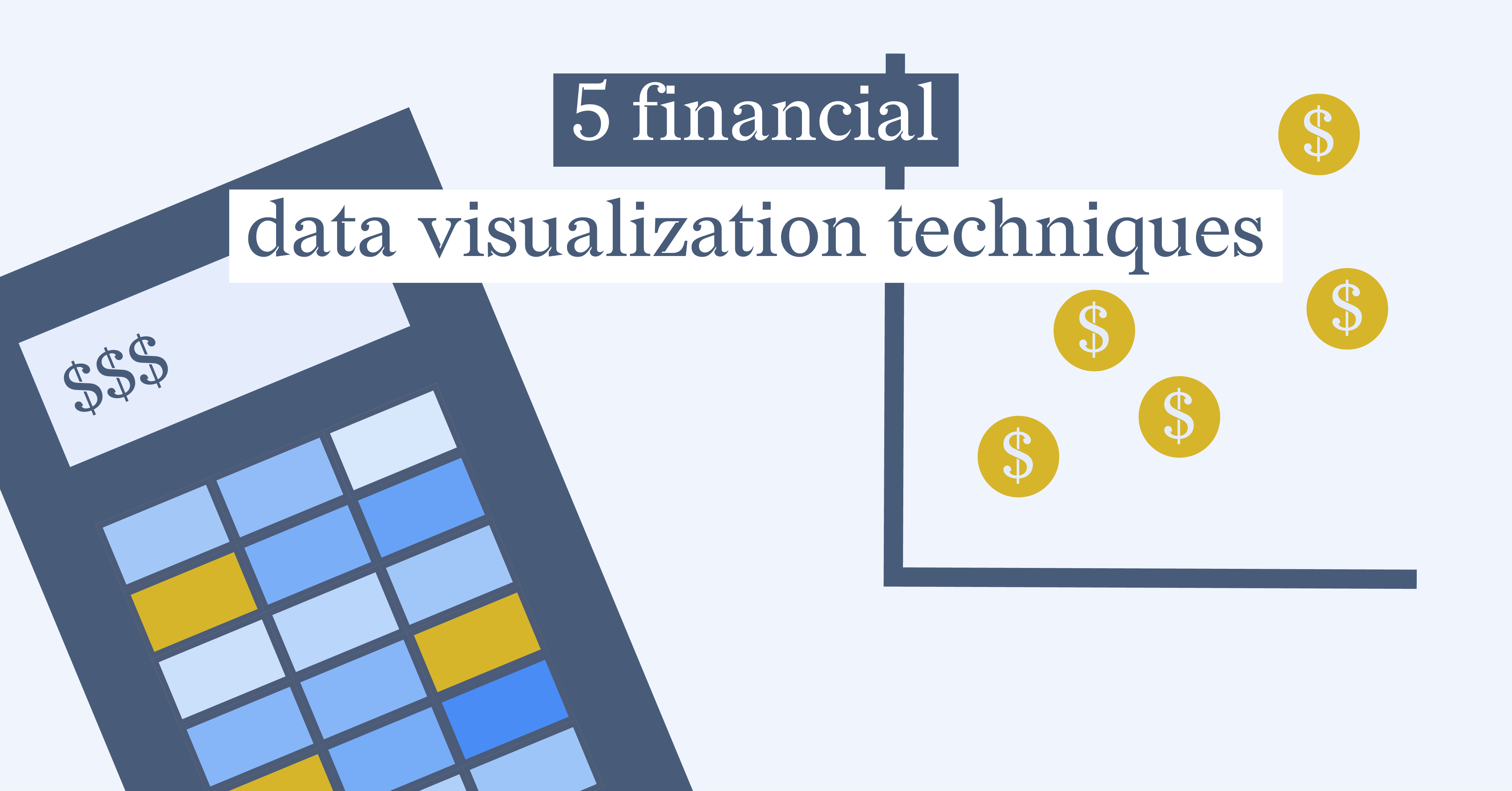A Guide to Data Visualization Best Practices

The world is inundated with endless information. Navigating it successfully requires effective data communication. One way of doing this is by becoming a master of data visualization best practices.
It’s a skill that makes most business aspects run smoothly. Professionals like analysts and entrepreneurs need to observe and decipher trends quickly to scale a business or make key important decisions. The market is ever-changing and evolving. Keeping abreast of data keeps you a step ahead of the competition.
Once you have a clear picture of the trends, making decisions is simpler. It also becomes easier to communicate with your team and get everyone on the same page.
Are you ready to learn more about data visualization best practices? Join us as we unpack all you need to know.
Understanding your audience
Who are you compiling the visual data for? This should be the first question you ask when you’re gathering information. Consider their needs and knowledge level in the organizing process.
Understanding your audience requires attention to detail. Use digestible infographics or graphs that communicate simply yet effectively. When dealing with experts in a specific field, you can adjust the visuals accordingly.
The goal is to have the data displayed in a way that’s appealing, clear, and concise. Your audience should understand your message. The data should support what you’re trying to convey.
Keep in mind that your data should tell a story. Context matters. The types of graphs you use need to show relevance within the information framework.
The context shows depth and humanizes the process. It allows the audience to understand the whole picture. Transforming the raw data into actionable insights makes decision-making easier.
Choosing the right type of graph
There are multiple types of visual data available. Each option is best suited to specific information types. Some are ideal for showing trends over time. Others work well for comparing and categorizing.
Some tips to remember are:
- Line graphs work best with trends over time
- Bar graphs are ideal for comparisons
- Pie charts illustrate portions of a whole
- Scatter plots identify relationships between variables.
- Heat maps are best for showing the relationship between two variables in a matrix format using colors.

Below we take a closer look at some of the most popular types of graphs used in data visualization.
Bar and column charts
One of the simplest options is bar graphs. They’re easy to understand and equally as simple to compile. They work well across various categories of data.
They help visually communicate clear comparisons. In context business, they may be used for comparing:
- Sales figures
- Survey responses
- Market share analysis
- Inventory management
- Employee performance
- Financial analysis
- Marketing campaigns effectiveness
- Budget allocations
Column charts or bar graphs are ideal for categorizing data. Each bar may represent a different aspect of the business. It’s simple to assess how they compare against each other.
These types of graphs are easy to interpret. There are many variations and designs so they can be customized to suit the needs of your data.
Line graphs
Another straightforward visualization option is line graphs. These are versatile and have a place in almost every boardroom meeting. They are indispensable tools for showing trends over time.
They’re particularly useful for highlighting data that fluctuates over time. Examples where you could use these types of graphs are:
- Tracking stock prices
- Observing temperature changes
- Monitoring website traffic
- Customer acquisition and retention
- Product development
- Market research
- Supply chain management
Line graphs are adaptable and can show the relationship between variables over time. They’re valuable for analysis of cause-and-effect relationships. This form of visual data may also assist with identifying correlations between variables.
When you observe trends in this manner, forecasting is more accurate. Experts can extrapolate historical data to calculate future outcomes. The result is informed and strategic decision-making.
Another benefit of line graphs is that multiple trends can be compared on the same graph. This enables straightforward side-by-side analysis of different business aspects.
This form of visual data is visually appealing, elegant, and easy to interpret. It’s also suitable for a wide range of audiences and fits multiple contexts.
Pie charts
Pie charts are visually compelling and typically represent percentages of a whole. In this type of chart, a circle is divided into slices and each slide displays a specific variable..
Pie charts are simple to interpret with a glance and offer a clear representation of proportional breakdowns. However, a drawback of this option is that it may not be as precise as other graph types.
They are most effective for showing proportions and percentages.
Businesses may use charts for:
- Market share analysis
- Budget allocation
- Product mix
- Customer segmentation
- Survey results
- Lead conversion rates
- Employee demographics
- Web traffic sources
Scatter plots
Scatter plots are great for showing the relationships between two variables. This graph helps identify correlations, clusters, and trends between multiple aspects.
Scatter plots also also useful for getting insights into the distribution of data points, data exploration, and predictive and comparative analysis.
Examples where scatter plots get used include:
- Sales and marketing expenditure analysis
- Examining customer engagement metrics
- Observing customer satisfaction data for product development
- Measuring operational efficiency between production inputs and output levels.
To delve deeper into various chart types, we suggest exploring our dedicated blog article covering 80 different types of charts.
Designing with clarity and simplicity
When there are multiple graphs at your disposal it might be tempting to use all of them. The main issue is that it can complicate the message you’re trying to convey.

It’s best to keep your data visualization strategy organized and minimalistic. Keep in mind that you aim to communicate effectively. The graphs are merely a form of assistance. They help clarify and display your information visually.
Be sure to keep things simple. Having cluttered visualizations can obscure your insights. Your audience needs to be able to discern meaningful patterns and trends at first glance.
Some ways to minimize clutter include:
- Removing unnecessary labels
- Don’t use excessive grid lines
- Avoid decorations that can be confusing or misleading
Getting your message across requires simplicity and clarity. Doing this doesn’t mean that your visual data has to be boring. There are strategic ways to use color, layout, and typography without compromising effective communication.
Use color sparingly and only for clear purposes. Examples include highlighting key data points and distinguishing between variables or categories. Opt for a consistent layout that effortlessly guides the viewer’s eye.
Consider your typography choices carefully. Your font size and style should prioritize clarity. Above all, it needs to be legible. By combining these elements, you create an aesthetically pleasing visualization without unnecessary distractions.
A design that prioritizes simplicity and engagement facilitates better understanding and easy interpretation.
Utilizing visual hierarchy and layout
Make your visualization data stand out. Use various techniques to guide the viewer’s attention. A common, yet effective method is using size variation.
Larger elements attract attention first. Keep this in mind and direct the audience to important information with bigger text. Use color contrast to highlight key data points. Engage the viewer with visual interest.
Other layout strategies include organizing information logically. Arrows, annotations, and similar visual cues are excellent for directing the eyes.
These are straightforward techniques andseamlessly guide viewers through the visual hierarchy while highlighting the relevant data.
Accessibility in data visualization
There are so many resources available for effective data visualizations. Be sure to select inclusive options. Keep in mind that some audience members may have disabilities or impairments.

It’s crucial to make your presentation accessible to these viewers too. Make sure that all the audience members can interact with the data. Fostering inclusive information sharing is essential and also aligns with ethical and legal standards.
There are certain best practices for color blindness and screen reader compatibility. Opt for color palettes that show adequate contrasts between the elements. Incorporate some patterns and texture differences to accommodate viewers with color vision deficiencies.
Find out more about the best charts for color blindness in our blog article.
Use descriptive text for report illustrations and charts. These can be read aloud to accommodate viewers with visual impairments.
To explore further insights on designing data visualizations for readers with visual impairments, we suggest checking out our specialized blog post on the subject.
Testing and feedback
Before presenting your data visualizations, it’s essential to test them. Check to see if they adequately share the insights you want to communicate.
Do some testing and ask participants to provide feedback. Use this information to identify any drawbacks. These may include usability issues or gaps in the data that you hadn’t noticed before. You’re also able to assess how the visuals are interpreted.
Popular methods for acquiring feedback include using surveys or having interviews. Based on the information collected, identify pain points and potential ways to enhance the presentation.
Ensure that the final way you communicate your data is feasible and effective.
Keeping up with trends and innovations
Data visualizations are an ever-evolving landscape. It’s vital to keep up with current trends to engage your audience. Some examples of these include:
- Using data for story-telling: Some individuals prefer taking a narrative-driven approach. The data helps them support the story and take the audience on an insightful journey.
- Data art and creative visualization: Using pleasing aesthetics and detailed data can be a powerful blend. It helps make the presentation engaging.
- Real-time data visualizations: These stream live data and reflect current circumstances.
- Machine learning and AI-driven visualization: AI is a hot new trend. Using these tools helps automate data analysis. These are ideal for large data sets.
- Augmented reality and virtual reality visualizations: Interacting with data has never been this immersive before. The methods allow audience members to visualize complex data sets in a new and exciting manner.
- Interactive visualizations: These allow users to dynamically explore the content.
- Branded reports: Keep all reports on brand with uniquely designed templates.
Regardless of your preference, it’s important to stay updated and inspired. Keep abreast of current resources and make your visualization data impeccable.
Automated Data Visualizations
In addition to the latest visualization trends and innovations, automated data visualizations are becoming increasingly important.
Automated data visualization refers to the process of automatically generating visualizations from templates and data sources. This eliminates the manual effort required to create charts and graphs over and over again, saving time and reducing errors. By automating data visualizations, businesses can ensure that charts and reports are generated consistently and efficiently.
Want to explore automated reporting further? Dive into our comprehensive guide.
Datylon Report Server is a powerful tool designed to streamline data visualization processes. It offers a comprehensive suite of features, including pre-built templates for quick and easy chart and report creation, scheduling options to automate report generation and reduce manual effort, seamless integration with various data sources, extensive customization options to tailor reports to specific needs, and flexible distribution options to share reports through various channels.
By using these features, Datylon Report Server helps users to create visually appealing, informative, and automated data visualizations that drive informed decision-making.
Simplifying the best practices
Mastering data visualization has become an essential skill. It empowers individuals in various industries to navigate extensive data sets.
Selecting the right visualization data allows effective communication to take place. By uncovering meaningful insights, it’s easier to make important decisions based on trends and patterns.
Now that you know all about the best practices for data visualization, why not dive deeper into the topic? Visit Datylon to discover more about it.
Julia Vorontsova - Chief Marketing Officer
Julia Vorontsova, a seasoned marketer and the CMO of the company, finds joy in guiding businesses through growth. Based in Belgium, having recently relocated from Canada, she immerses herself in diverse cultures while nurturing her passions for travel and jazz.

